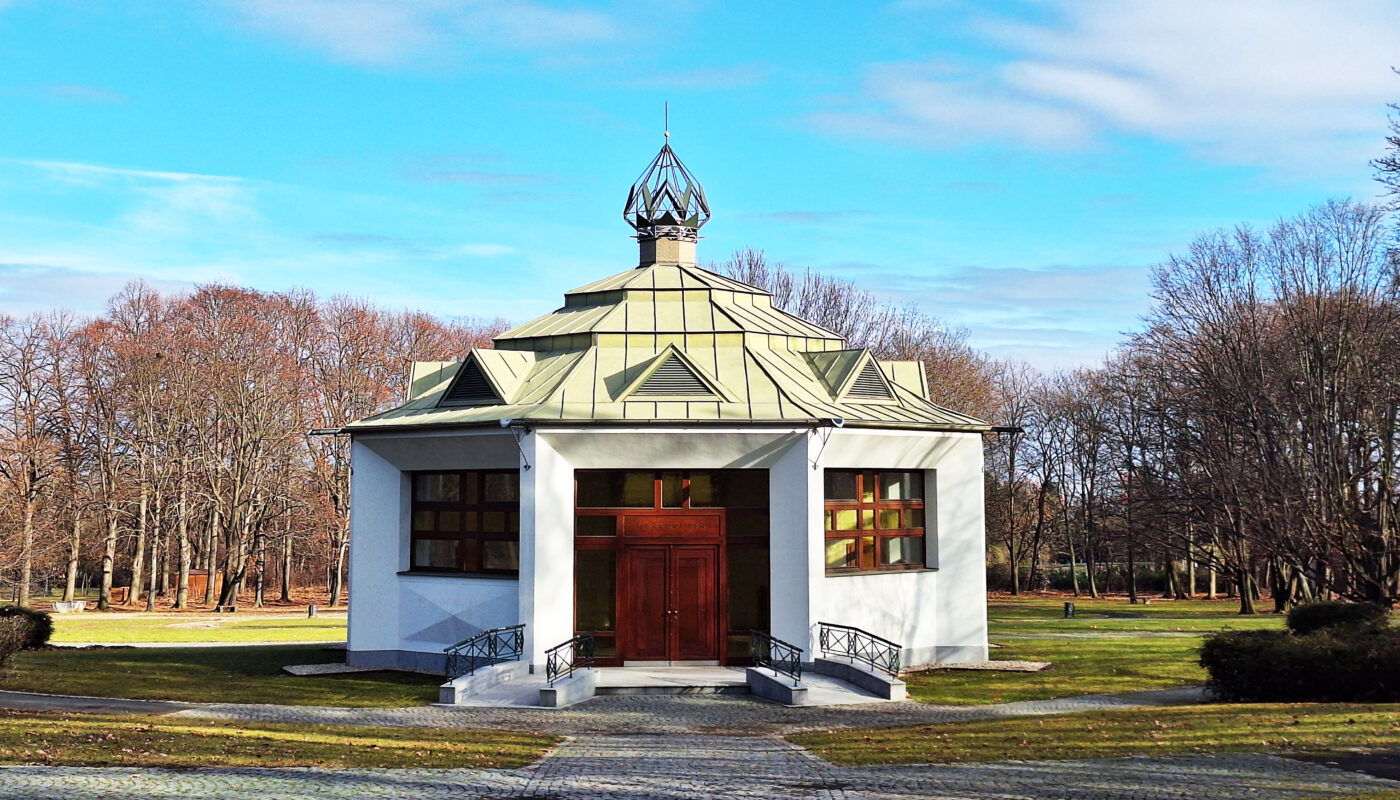Reading Time: 3 Minutes 7 Seconds
General info
The Ďáblický hřbitov is the cemetery of the Ďáblice district, in Prague 8, and it has a peculiarity: it is the only Cubist cemetery in the world.
Among the various testimonies of Cubist architecture in Prague and the Czech Republic, the Ďáblice cemetery is definitely a unique representation of the Cubist style, and for this reason it was declared national monument in 2017.
Ďáblice is the second largest cemetery in Prague and occupies an area of 29 hectares.
It was designed by one of the most important architects of the Cubist period, Vlastislav Hofman, and it was built during the years 1912-1914.
What we see today is only a part of the great project that aimed at creating a new cemetery with a crematorium in Prague.
In the end none of it was created.
Visit the Cubist cemetery
You can reach the place by tram n. 10 until the last stop, i.e. Sídliště Ďáblice.
By approaching the cemetery from the street, you can immediately notice the outer walls with cubist-style columns, and upon arriving at the main gate you can admire its square arched structure.
The iron gates are decorated with cubist motifs and the two mirrored buildings at the left and at the right of the main gate (respectively, a flower shop and the administration building) will surprise you.

As soon as you enter the cemetery, on the left side you will see a series of short buildings with urns that contain the ashes of the deceased.
These are not in a cubist style, but they are remarkable for the geometric lines and silver fixtures.
If instead you walk straight from the main gate, you reach a Cubist building, which serves as a funeral hall.
All the details of this building deserve special attention: the pentagonal base, the walls, the curves of the metal roof, the geometric designs on the railings and the internal wooden furniture (visible by peeking in through the windows).
Behind the building you find a garden area where the ashes of the dead are scattered, and where the last goodbye is given to the loved ones.
Precisely for this reason, you should walk strictly on the marked paths and avoid stepping on the lawn and among the trees. There are also some signs to remind you of this.
Moving forward along the way, other Cubist elements show up, such as drinking fountains, rubbish bins and benches.
Other relevant areas of the Cubist cemetery
From this point begins the “Forest of Memories” (Les vzpomínek, in Czech), a place where it is possible to lay the ashes of the dead at the roots of trees. On the trees, then, wooden signs are attached bearing the names of the deceased and some poems or words.
Continuing along the paths of the cemetery, you will find various burial places.
A zone of the cemetery is dedicated to the Yugoslav and Italian partisans who fought in the Second World War.
In another area near the northern wall there is a section with unmarked graves.
Here are buried the victims of the Prague Uprising, the parachutists Jan Kubiš and Jozef Gabčík and of the heroes of the Second Resistance (against Nazism).
For the ones who do not know, Kubiš and Gabčík were the two soldiers who killed the Nazi General Reinhard Heydrich.
Still in this area, you will find the Honorary cemetery of the Third Resistance (against Communism), with a memorial to the victims of the Communist regime, and the Children’s cemetery.

You are here at the end of the cemetery, at its northern end.
As you walk past the cemetery chapel, which features a few Cubistic elements, you will arrive at the secondary gate, decorated with geometric iron designs surrounded by two lateral Cubist chapels.
Extras
If you are hungry or thirsty, on your way back to the tram stop you can stop by úl (if it is open).
Otherwise, you can reach Crepes&Coffee a bit further, closer to Kobylisy metro.

